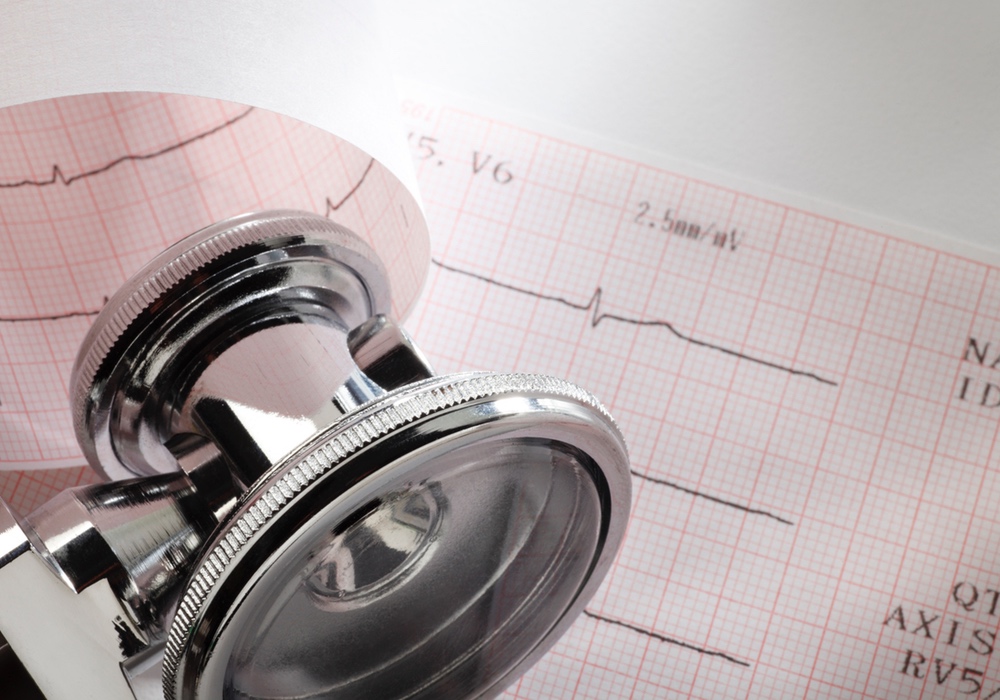Dr. Khetan is Cardiology Fellow at the Harrington Heart & Vascular Institute, University Hospitals Cleveland Medical Center. Dr. Josephson is Professor of Medicine Case Western Reserve University School of Medicine. Director Cardiac Intensive Care and Cardiovascular and Director, Pulmonary Rehabilitation, Harrington Heart & Vascular Institute, University Hospitals Cleveland Medical Center. Dr. Mohan is Chief Quality Officer, Harrington Heart & Vascular Institute, University Hospitals Cleveland Medical Center.
In our previous segment we discussed why it is that blood pressure rises as you age, and why it is so important to take your blood pressure correctly and regularly.
Here we turn our attention to those people whose blood pressure is consistently high. We look at what the current guidelines are for determining high blood pressure, the treatments available, and the barriers many experience when trying to keep their blood pressure down, with or without medication.
The reduction in BP from each lifestyle modification alone may be small, but they can be additive in combination [1].
Lifestyle interventions also tend to improve the effectiveness of antihypertensive medications, achieving BP control with lower doses or fewer classes of drugs than would otherwise be required. One of the most common causes of resistant hypertension is failure to make the appropriate lifestyle changes [2]. Lifestyle changes also improve overall health, of course, reducing the risk for other diseases such as depression, osteoarthritis, cancer and diabetes.The overall trend since 1977 has been a progressive lowering of systolic and diastolic blood pressure targets, as increasing evidence accumulated about the safety and efficacy of lower targets.
Alcohol consumption should be restricted to two standard drinks per day for men (one standard drink contains 14 grams of ethanol: 12 oz. beer which is usually 5% alcohol or 5 oz. wine which is usually 12% alcohol, and one standard drink per day for women. For hypertensive individuals who consume more alcohol than this, reduction in alcohol consumption can reduce systolic blood pressure by 2–4 mm Hg. The relation of alcohol with blood pressure is dose-dependent, and is most prominent when intake exceeds five drinks per day.
Once antihypertensive drug therapy is initiated, follow-up is advised at monthly intervals until goal blood pressure is reached. Once goal blood pressure is attained, follow-up visits can be at less frequent intervals.
A) Diuretics. These drugs decrease blood pressure by sodium and volume depletion.
B) Sympathoplegic agents. These drugs decrease the blood pressure by dilating (widening) blood vessels, inhibiting cardiac function or increasing venous pooling of blood.
C) Direct vasodilators. These agents decrease blood pressure either by lowering vascular resistance in the resistance vessels (arterioles) or by increasing venous capacitance, which leads to decreased cardiac output.Similarly, ACE inhibitors and angiotensin-receptor blockers should be the antihypertensive of choice in individuals with diabetes, chronic kidney disease or left ventricular systolic dysfunction.
D) Drugs that interrupt the renin–angiotensin–aldosterone system (RAAS). The RAAS is a hormone system that helps regulate plasma sodium concentration and arterial blood pressure. These drugs counteract the effects of angiotensin II (which increases peripheral vascular resistance and, potentially, also increases plasma volume.
Since the first guidelines from the Joint National Committee on Prevention, Detection, Evaluation, and Treatment of High Blood Pressure in 1977, there have been seven other JNC committees — the JNC 8 guidelines were released in 2014[5]. The overall trend since 1977 has been a progressive lowering of systolic and diastolic blood pressure targets, as more and more evidence accumulated about the safety and efficacy of lower targets. The JNC 7 guidelines, released in 2003, advocated for a blood pressure target under 140/90 mm Hg in all individuals, including older adults over 65 years of age. In high-risk individuals with chronic kidney disease (CKD) and diabetes, JNC 7 advocated for a goal blood pressure under 130/80 mm Hg.
The JNC 8 guidelines, however, supported a more liberal approach, citing lack of evidence for lower blood pressure targets. The recommendations of JNC 8 are summarized in the Table below[6].
Table 1: JNC 8 Target Blood Pressures.
| Population | Age <60 years | Age >60 years |
|---|---|---|
| General | 140/90 | 150/90 |
| High-riska | 140/90 | 150/90 |
Table 2: Our Recommended Guidelines.
| Population | Age <60 years | Age >60 years |
|---|---|---|
| General | 130/80b | 140/90 |
| High-riska | 130/80b | 130/80b |
bTreat initially to target blood pressure of <140/90. If treatment is well tolerated, can proceed to lower target of <130/80.
There are a lot of reasons why a person's high blood pressure may not be fully under control. It may be as simple as a lack of awareness of the problem or a failure to seek regular treatment for the condition. Others may find it difficult to follow the medication schedule their physician has prescribed.
A lack of insurance and high out of pocket costs are common reasons why people avoid seeking care from a physician. Community-based screening programs such as those offered at libraries, churches or schools can help uncover hypertension among people who do not visit a doctor regularly.
Doctors should ask patients directly, at every visit, if they are having any difficulty taking their medications. Even if your doctor doesn't ask, you should bring it up. If you have been having difficulty taking your blood pressure medication as prescribed, perhaps for reasons of cost or just because you've been feeling low, tell your healthcare provider. You aren't in this alone; your doctor has likely had other patients with similar concerns or issues and can help.
Don't be afraid to ask about the expected benefits of treatment, or how to interpret blood pressure numbers, and your blood pressure goal. At every visit your blood pressure reading should be given to you in writing.At every visit your blood pressure reading should be given to you in writing.
Physicians and nursing staffs often have brochures or materials from professional organizations printed from the web. They can also help you find ways to sync your medication regimen with your daily routine, such as taking medicines after meals.
A once-daily regimen is ideal. Review any other medications you are taking with your doctor. It may be that one or more of them can be de-prescribed, making it even easier to take and keep track of your medications. Adverse drug interactions are another reason to do this.Overeating and obesity, physical inactivity, sleep apnea, tobacco abuse and excessive dietary sodium or alcohol intake can all sabotage blood pressure control.
Some medications can actually increase blood pressure. Bring all your medications, including over-the-counter (OTC) medications with you to your appointment. Blood pressure can be increased by use of NSAIDs and pressor agents that are present in OTC cold remedies. Herbal compounds that can increase blood pressure include Ma Huang, ephedra and bitter orange. Other medications that can cause hypertension include oral contraceptive hormones, post-transplant medications such as cyclosporine and tacrolimus, steroid hormones and erythropoietin. Illicit drug use, especially cocaine, phencyclidine (PCP) and amphetamines, can lead to difficulty in controlling blood pressure.
If you are having difficulty controlling your blood pressure, you may want to use a home blood pressure machine to keep track of your pressure and bring in those devices to be checked for accuracy and correct technique at regular intervals.
Meditation, yoga and mindfulness-based techniques can also be used to improve blood pressure, though the magnitude of the effect is modest (approximately 5 mm Hg reduction). They may also improve response to medications.
If you have trouble with the lifestyle changes designed to lower your blood pressure, your healthcare provider can probably help with strategies to improve your willpower. It is a good idea to choose one change at a time — first reducing salt, for example; then cutting out a high calorie food like soda to lose weight, or increasing exercise. Come up with small, time-bound goals that you choose yourself and share with other members of your family.
One's culture and beliefs can also make it hard to follow the treatment regimen you've been prescribed. Many people see the need to take daily blood pressure or other medications as a sign of illness and therefore avoid them as they feel ‘fine’. If you find yourself resisting taking the medications you've been prescribed, talk with your doctor. Acknowledging your health care beliefs and frustrations can lead to increased trust, communication and may even help improve the acceptability of the regimen[11].
People may skip appointments or take only some of their doses to decrease costs. Doctors should look upon out-of-pocket medicine costs as a side-effect of drugs, and ask about them at every visit, just like any other common side effect. If your care provider doesn't ask, it's up to you to let him or her know how the cost of medication is affecting your economic well-being. Your doctor may be able to prescribe lower cost generic medications or refer you to a social worker who can see if you qualify for programs that may underwrite some of the costs of certain medicines.
Other healthcare professionals can play a key role in blood pressure control, too. Licensed nutritionists and nutrition educators can help with graded changes in lifestyle, suggesting healthy food choices. Pharmacists can improve blood pressure control by monitoring the patient’s prescription refills and tracking adherence. Programs in which pharmacists check blood pressure and make changes to the dosing of prescribed anti-hypertensives have been shown to improve blood pressure control.
Other health care professionals such as nurses, nurse case managers, optometrists, physician assistants and podiatrists can also help you achieve lifestyle goals and improve adherence to medications. Public health nurses and community health workers in high-risk areas can screen for hypertension in the community, make appropriate referrals, follow-ups and educate patients.Programs in which pharmacists check blood pressure and make changes to the dosing of prescribed anti-hypertensives have been shown to improve blood pressure control.
Secondary causes of hypertension should be considered by physicians treating patients with resistant hypertension. These include kidney disease, renal artery stenosis, adrenal disorders, neurological disorders and obstructive sleep apnea.
We have made enormous gains since Franklin D. Roosevelt died as a result of his high blood pressure. We hope this miniseries on hypertension inspires you to take your blood pressure more frequently; take it properly; and if you blood pressure is found to be high, make the lifestyle changes that will help bring down your numbers. It is important that you take any blood pressure medications you may be prescribed at their full doses and as often as they are meant to be taken. If you find that the cost of your medications or certain beliefs you may have lead you to cut back on medication or skip it altogether, discuss the issues with your doctor.
Your good management of your high blood pressure can prevent other health issues and ensure a long and healthy life.
[2] Eckel RH, Jakicic JM, Ard JD, Hubbard VS, de Jesus JM, Lee I-M, et al. 2013 AHA/ACC guideline on lifestyle management to reduce cardiovascular risk. Circulation 2013:01 – cir.
[3] Appel LJ, Brands MW, Daniels SR, Karanja N, Elmer PJ, Sacks FM. Dietary approaches to prevent and treat hypertension. Hypertension 2006;47:296–308.
[4] Weber MA, Schiffrin EL, White WB, Mann S, Lindholm LH, Kenerson JG, et al. Clinical practice guidelines for the management of hypertension in the community. J Clin Hypertens 2014;16:14–26.
[5] Pfeffer MA, McMurray JJ. Lessons in Uncertainty and Humility—Clinical Trials Involving Hypertension. N Engl J Med 2016;375:1756–66.
[6] James PA, Oparil S, Carter BL, Cushman WC, Dennison-Himmelfarb C, Handler J, et al. 2014 evidence-based guideline for the management of high blood pressure in adults: report from the panel members appointed to the Eighth Joint National Committee (JNC 8). Jama 2014;311:507–20.
[7] Lonn EM, Bosch J, López-Jaramillo P, Zhu J, Liu L, Pais P, et al. Blood-pressure lowering in intermediate-risk persons without cardiovascular disease. N Engl J Med 2016;374:2009–20.
[8] Group SR, others. A randomized trial of intensive versus standard blood-pressure control. N Engl J Med 2015;2015:2103–16.
[9] Chobanian AV. Hypertension in 2017—What Is the Right Target? Jama 2017;317:579–80.
[10] Osterberg L, Blaschke T. Adherence to Medication. N Engl J Med 2005;353:487–97. doi:10.1056/NEJMra050100.
[11] Haynes RB, McDonald HP, Garg AX. Helping patients follow prescribed treatment: clinical applications. Jama 2002;288:2880–3.
[12] Calhoun DA, Jones D, Textor S, Goff DC, Murphy TP, Toto RD, et al. Resistant hypertension: diagnosis, evaluation, and treatment. Circulation 2008;117:e510–26.





